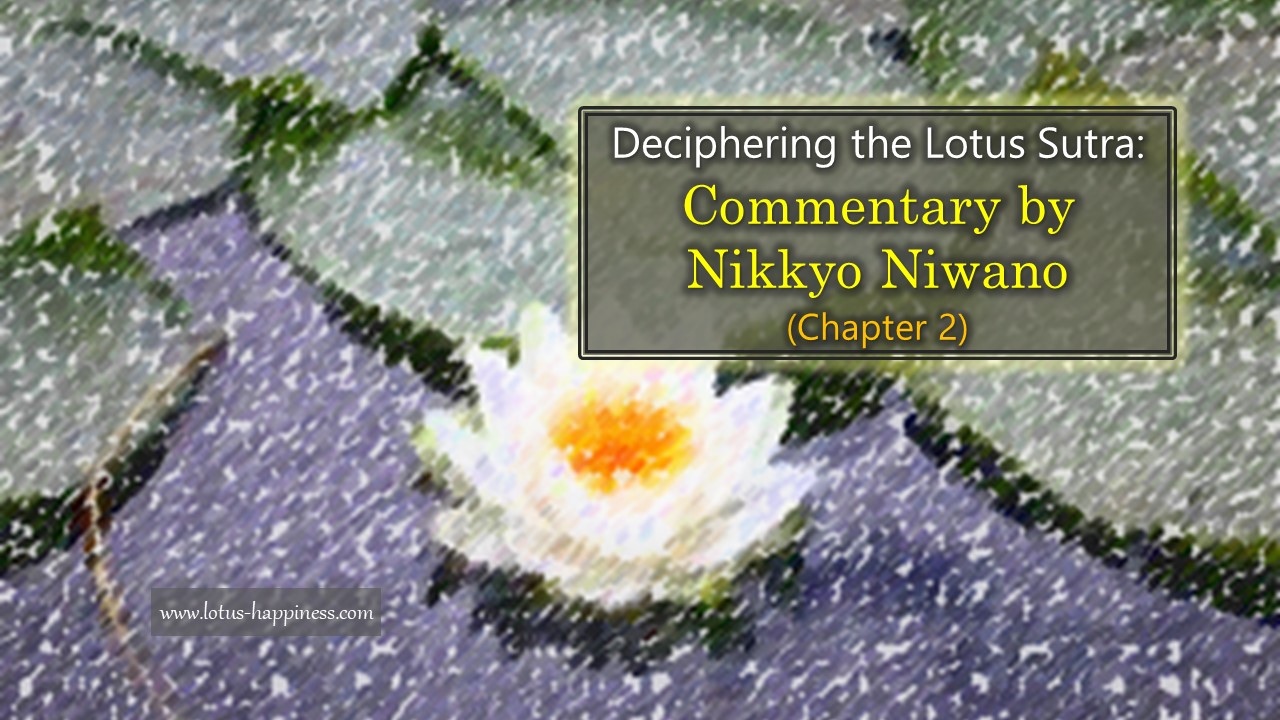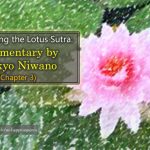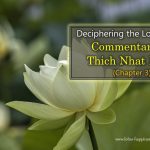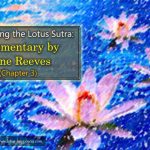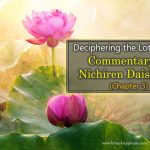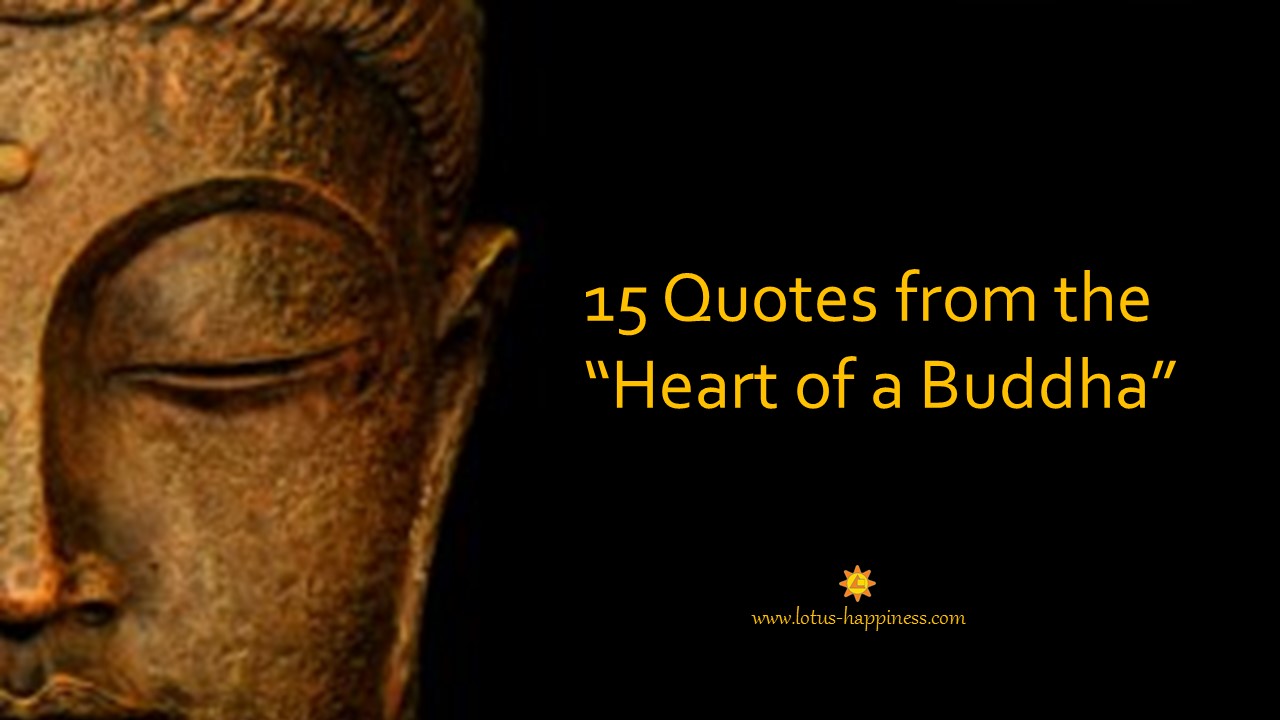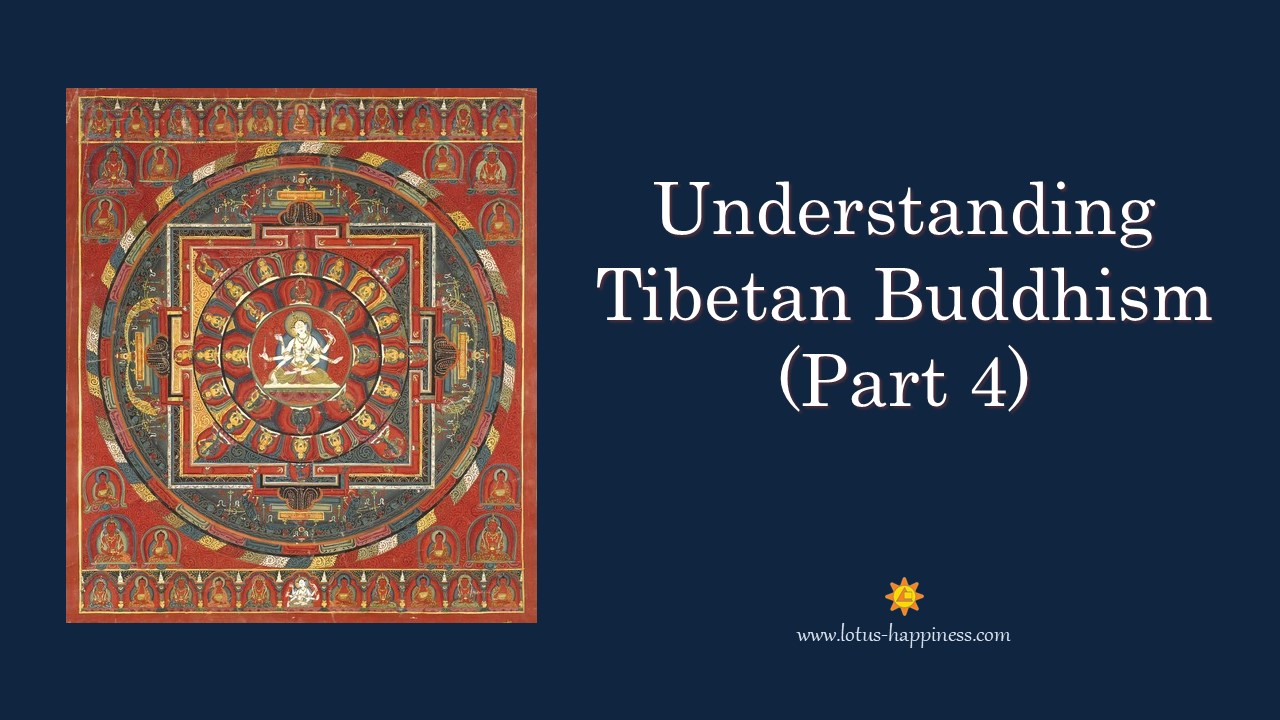Deciphering the Lotus Sutra: Commentary by Nikkyo Niwano (Chapter 2)
This chapter, with chapter 16, “Revelation of the [Eternal] Life of the Tathagata,” has long been regarded as the heart of the Lotus Sutra. It will be well to bear in mind the question of why this is so, but first we need to examine the plan of the chapter itself.
Near the beginning Shakyamuni concludes the meditation in which he has been engaged. Before anyone poses a question, he immediately begins to speak, addressing the disciple Shariputra. He explains that the wisdom of the buddhas is most profound, an awakening to the basic one truth of the universe. This basic truth is of such depth that ordinary people cannot understand it, and on this account, by using various ways of teaching within the capacity of their understanding, he has brought salvation to many. But the fact remains that they have not grasped the true meaning at the heart of the teaching. Having said this much, the Buddha suddenly stops, then resumes, again addressing Shariputra.
The reason no one has grasped the truth is that the perfected truth is such that only among buddhas can it be comprehended. The statement of this truth, known as the Ten Suchnesses, in briefest form is that everything in our world has its own appearance or visible aspect (form), its own character (nature), its own entity (embodiment), its own latent energy (potency), and its own working or functioning (function). The total of these four elements becomes a cause (primary cause), which, in contact with a condition (secondary cause), brings about myriad results (effect) and rewards (recompense)‐‐that is, continuing effect. And although these nine elements seem different and multiple by appearance, all of them rest upon the universal truth and, in true substance, are from first to last a complete fundamental whole.
The statement in the sutra is swift and brief, and so we shall return to the point later. A difficult point of doctrine having thus been stated, the entire matter is reexplained in more memorable poetic form, embellished and further developed. The listeners, however, are puzzled at this new turn and do not know what to say.
Shariputra guesses the difficulty and begs Shakyamuni to go further and explain what he means by the tactful method of teaching: teaching in ways suitable to the occasion and to the people to be reached. This artful method is announced to be the kernel of the wisdom of the Buddha, and the great worth of tactfulness is praised.
Still, the listeners are all the more perplexed. While expecting to hear the supreme truth that the Buddha has seen, they are treated to words of praise for the everyday teaching of tact, and they are unable to see any connection.
Shariputra is not to be put off and is quite demanding as the Buddha three times declines to explain, on the grounds that what he has to say can only confuse and is thus better left unsaid.
Since, to begin with, the Buddha had of his own accord, with no prompting or questioning, begun to preach, we must suppose that this display of unwillingness had the purpose of creating in his hearers a suitable frame of mind to listen to what was to come. Then realizing, in response to Shariputra’s pleading, that his hearers are ready, the Buddha is about to speak, when, in a body, five thousand of the assembly rise and depart. Shakyamuni simply watches, making no effort to stop them, and when all have left, he takes up his sermon again.
The continuation, first in prose, then in more memorable verse, can be summarized briefly. The aim and purpose for which buddhas have appeared on earth has been from first to last to awaken people to the truth that all people alike partake of the buddha‐nature. Thus the object of the teachings of the buddhas is to lead all people alike to the state of buddhahood, but this does not mean that there are distinctions in the truth. The objective is always the same, although up to now Shakyamuni has turned to various ways of teaching as a matter of tact in order to achieve the objective.
The doctrine that all humankind could become buddhas had not been stated before, but the time had come to make it clear that whoever followed and practiced the teaching would become a buddha. This thought, though, is not to be taken to mean that all the earlier doctrine is useless. No matter how much it may appear that teachings adapted to need were only a temporary means of saving people close at hand, such teachings are part of the process leading to the wisdom of the buddhas, which is the true object. All the teachings are related to this supreme truth, and all ways are related to this supremely true Way.
One may look upon someone’s standing before a pagoda saying a little prayer, or a child’s drawing of a buddha on the ground, as things with no bearing on this, but actually even these are related to this supreme Way, the Way to buddhahood. One must by no means make light of the possible range of tactful means. We should remember that the tactful way as such is the truth.
Source: RK-World

